The New Zealand Tech Alliance is a group of independent technology associations from across New Zealand that work together to ensure a strong voice for technology.
Visit Tech Alliance

The New Zealand Tech Alliance is a group of independent technology associations from across New Zealand that work together to ensure a strong voice for technology.
Visit Tech Alliance
Over the past few weeks we’ve been building our own website and experiencing what it takes to embed equity and meet the Web Content Accessibility Guidelines (WCAG) 2.1. We’ve had to dig code deep to get it right.
As a small, information based website, we don’t have the complexities of large government agencies or private companies. We don’t require registrations and online forms and to put all Official Information Act requests online. Our experience would be more that of a small-medium service-based business.
For us, the process was surprisingly smooth. It helped that we were an information site only. It helped that we were starting from scratch, starting with accessibility first, adding components from an already accessible all of government design system. It helped that we hired professionals at Springload to do the hard yards for us.
Still, we expected it to add to our timelines, restrict us, require some wrangling, a few compromises.
The restrictions were strangely freeing. The need for simplicity, surprisingly refreshing.
There’s a sense of lightness, even relief, that comes from resisting the desire to over communicate and over design. Content got tightened. Colours lightened. Visual noise toned down. We had to think carefully about what to say, how to say it, and what mattered most.
Being proponents of innovation and invention, some of us dreamt dynamic — bells and whistles. The designers pushed us, we pushed back. We listened, and tempered our expectations. We reminded ourselves of first principles — universally designing a website that works for everyone. Where everyone gets to choose how they wish to engage with what we have to say. Where they have two or more ways to find what they need.
We carried out an independent accessibility review with the team at Intopia. Waiting for the report was like waiting for your exam results. Would you get an AA pass?
We got a good report, with a list of “passes” and only a few “fails” against 50 success criteria. They had to look hard to find fault. Wasn’t an 82% pass an A pass? Not in the web world. All criteria must be passed to meet AA standards. Each fail, non-critical though it was, was still a potential barrier for people using our site.
The devil really is in the detail. Every heading, every block must be placed with care. Is an image just decorative or does it need alt text? Colours and contrast need to be spot on. Missing code can confuse, incomplete lists can bemuse. Attributes must have value. Items must be programmatically determined. Some things should be hidden and some things are redundant. New windows cause chaos. So does non-descriptive text. You’d be amazed what you find when you put your code to the test.
You seek perfection all the while knowing you’ll never be perfect. But once the non-critical issues are fixed, we’re confident to go live. And keen to continually improve.
An accessibility audit is just one part of good user testing. There’s no substitute for testing with users themselves. Once we’re live (hopefully next week), we’re open to you telling us what works for you and what doesn’t. Name the issue and your experience of it.
It may take extra time, more people resource, some expertise to get it right. But you can’t put a price on something that’s priceless. On making sure that technology is used in ways that embed equity. On making sure that technology is in service to everyone’s learning, connecting, growing and wellbeing. On being the good ancestors our digital future needs us to be.